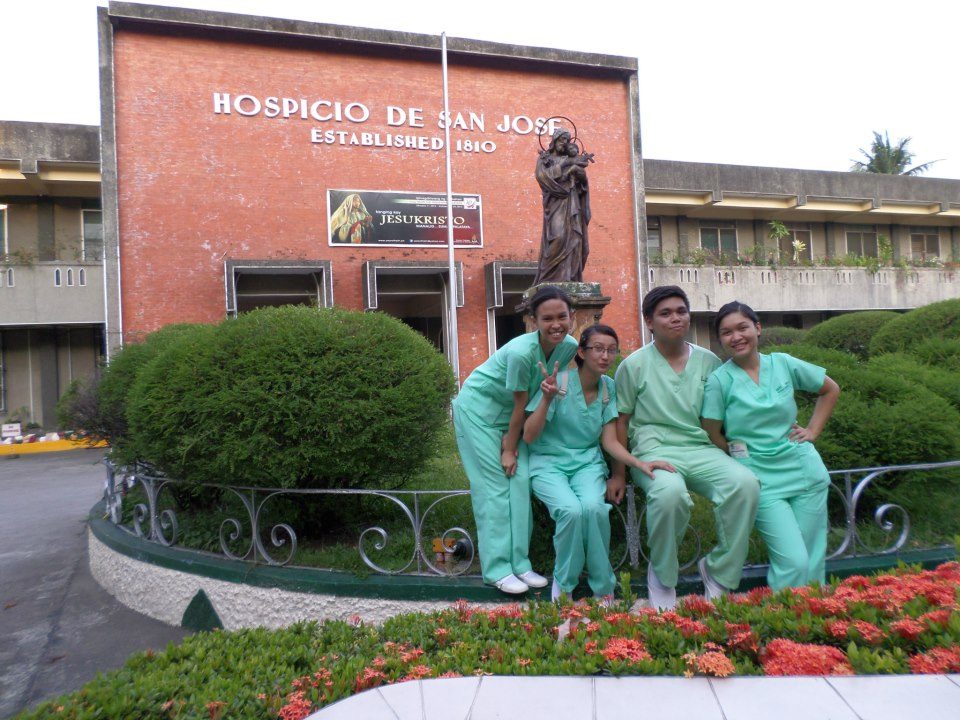SUMMARY
This is AI generated summarization, which may have errors. For context, always refer to the full article.

Part 1
(Part 2: ‘Why our nurses are leaving‘ )
MANILA, Philippines – A total of 12 hours per shift, 3 to 4 days a week, and P700 a day.
These figures sum up the reality for Albay native Faith Barcelon, a 24-year-old nurse for a government hospital in Quezon City.
Barcelon, like most nurses, does not have the privilege of a fixed schedule. Their shifts are assigned each month and vary every week – often at random.
On one Monday, for example, she was assigned to take the morning shift from 6 am to 6 pm. Her next shift on Thursday, meanwhile, starts at night. On other days, she’s on call, which means she has to be ready to report to work if the need arises.
Her income is never the same each month either. On busy months, she could earn as much as P16,000 – that’s when she’s called to report more often than usual. On regular months, she gets to take home only around P10,000.
“I have to pay my rent, groceries, provide for my transportation. Kulang na kulang [ang sweldo]. Minsan nagpapadala nanay ko just to sustain me (My salary is really not enough. Sometimes my mother sends money just to sustain me),” Barcelon said.
While the law sets the minimum pay for entry-level nurses at government hospitals at P19,000 a month (Salary Grade 11), Barcelon works on a contractual basis, like most of her colleagues. This also means she doesn’t get benefits that regular employees enjoy.
For social services, “you have to pay on your own,” she added. With her income, she can only pay for a PhilHealth membership.
A nurse’s role
It also doesn’t help that many patients misunderstand the role of nurses, Barcelon said. Some patients can be very demanding, expecting nurses to always attend to them on the dot – regardless if there are other patients with more urgent needs.
“May time na nagre-revive kami ng pasyente, and there was a patient na nagpapa-bed bath, kasi may darating siya na bisita. Wala kang magagawa kasi pasyente sila and they will always be right,” Barcelon said.
(There was a time when we were reviving a patient and another was asking for a bed bath because she had visitors coming. You can’t do anything because they’re patients and they will always be right.)

Some patients, she said, treat them in a degrading manner.
“Normal na ‘yung may nagrereklamo, ‘yung made-degrade ka dahil tingin nila ‘nurse ka lang’ – ‘yung word na ‘lang’ – ilang taon ka nag-aral, nag-review ka ng dalawang buwan para makakuha ng lisensya, pero the way na i-treat ng ibang tao, ‘nurse ka lang.’ You’re just a person tasked to take care of them, give them their medicines, change their diapers,” Barcelon said.
(It’s normal to get complaints, to feel degraded because they think you’re “just a nurse” – the word “just” – you studied for so many years, reviewed for two months to get a license, but the way they treat you, you’re “just a nurse.” You’re just a person tasked to take care of them, give them their medicines, change their diapers.)
One would think that it should at least be easier to get to where Barcelon is now. But it’s not.
The hard journey to be a nurse
To be a nurse in the Philippines, one will need to take a 4-year course, which in many private schools, would cost at least P40,000 per semester. Since nursing is a highly technical course, students also need to invest in different tools and pay for expensive exposure tours.
After graduating, nursing students must work on getting their licenses. To pass the board examinations, many opt to join review classes which can be costly as well.
It doesn’t end there, much to Barcelon’s surprise.
“Sobrang masaya ka na sana kasi finally [registered nurse] ka na – may lisensyang ipagmamalaki. Pero ‘yung proseso, ang daming babayaran,” she said. (You would’ve been happy already to be a registered nurse – to have a license you can be proud of. But given the process, there’s a lot you still need to pay for.)
After passing the exams, nurses have to pay for their membership in the Philippine Nurses Association. A lifetime membership costs P5,000, but some opt to pay P400 every year instead.
Barcelon also had to pay for more training courses in basic life support and intravenous therapy, which she said, are hiring requirements for many hospitals.
But even with all these education and training certificates, it’s still very hard for nurses to find a job here.

Nursing became extremely popular in the Philippines over a decade ago, as many countries abroad started hiring Filipino nurses. Schools offering nursing programs also increased rapidly.
By 2011, the Philippines was producing more qualified nurses than the domestic and global economies could absorb, leading to massive unemployment in the sector.
This forced many nursing graduates to work in hospitals for free – with some even having to pay their way in.
Working for free
Barcelon had her own share of post-graduation horror.
After getting her license, she was excited to finally take on the world as a nurse.
She first applied for a job at a university hospital in Albay, where she was able to pass the job interview. But to her surprise, the hospital told her that she needed to work there for free for a year before she could be considered for a permanent position.
“Bibigyan daw nila ako ng allowance lang na P130 per day,” Barcelon said. “Kapag hindi pa natapos ang nasa contract, ikaw pa ang magbabayad sa hospital.” (They were going to give me an allowance of P100 per day. If I don’t finish the contract, I would have to pay the hospital.)
She had been warned beforehand that this had become “the system.” But Barcelon refused to be a part of it and declined.
“Nagalit ako. Laging sinasabi nila, ito ‘yung reality of today’s nurses. Kung hindi ka papasok sa ganitong sistema, hindi ka magkakaroon ng trabaho. Pero nagmatigas ako,” she said.
(I got angry. They always say that this is the reality of today’s nurses. If you don’t get into this system, you won’t get a job. But I resisted it.)
Barcelon tried her luck with other hospitals, first with a government hospital in Albay and then another private hospital. The government hospital asked her to also work for free first while the latter only offered to give her meal allowances.
“It was very heartbreaking, that the reality is like this. From one hospital to another, no one was willing to open their doors because you’re a fresh graduate – but they’re willing to exploit you. They expect you to work in exchange for a paper, certifying that you work with them,” she said.
Barcelon was finally able to practice for a while as a volunteer nurse in Albay, when thousands of people were evacuated due to the threat of a Mayon Volcano eruption. But this stint lasted for only 3 months.
Just like many other nurses, Barcelon also tried getting a job abroad. With help from her cousin, she flew to Singapore to look for work.
After staying there for a whole month, the only offer she got was to be a caregiver in a retirement home. She was tempted to take it, but her family advised her to decline.
Heartbroken, Barcelon returned to the Philippines. At this point, she was already willing to swallow her pride and give in to “the system.”
To get into the hospital where she is working now, Barcelon had to pay to join a mandatory familiarization training program for 4 months. “Kinain ko prinsipyo ko two years ago (I compromised my principles two years ago),” she lamented.
Whenever things get too tough and she’s tempted to leave, Barcelon reminds herself that she still has it better than many other nursing graduates. Many of her batchmates, for example, were forced to tread different paths – working in call centers, in the police force, et cetera.
“I’m thankful that I have a supportive family. If not for them, I would have shifted careers already… Paano na lang ‘yung ibang (How about the other) breadwinners – those who are expected to provide [for] and support their families? Paano ang may ganoong realidad (How about those with that reality)?” she said.
Worth it
Difficult as it may be, Barcelon is still holding on to the profession she chose.
“Ang ginagawa ko na lang, kapag feeling ko natatapakan na pride ko, I think of reasons why I’m doing this in the first place,” she said. (What I do is, when I feel that my pride is being trampled on, I think of reasons why I’m doing this in the first place.)
While there are demanding patients, there are still many who are grateful and kind.
“May mga patients naman na sobrang appreciative sa ‘yo. May moments na nade-degrade buong pagkatao mo, pero may glorifying moments tulad na sinasabihan ka na ‘Sana, ikaw pa rin nurse ko sa susunod,'” she said.
(There are patients who are very appreciative. There are moments when you feel degraded, but there are also glorifying moments like when they tell you, “I hope you’ll still be my nurse next time.”)
Are all the troubles worth it?
“Yes,” Barcelon said. “Nagiging worth it kapag nakikita mong may napupuntahan ang efforts mo – kapag nakikita mong nag-i-improve ang patients, when you save lives. Worth it because you’re always growing and learning.”
(It becomes worth it when you see your efforts going somewhere – when you see your patients improving, when you save lives. Worth it because you’re always growing and learning.) – Rappler.com
Add a comment
How does this make you feel?
There are no comments yet. Add your comment to start the conversation.